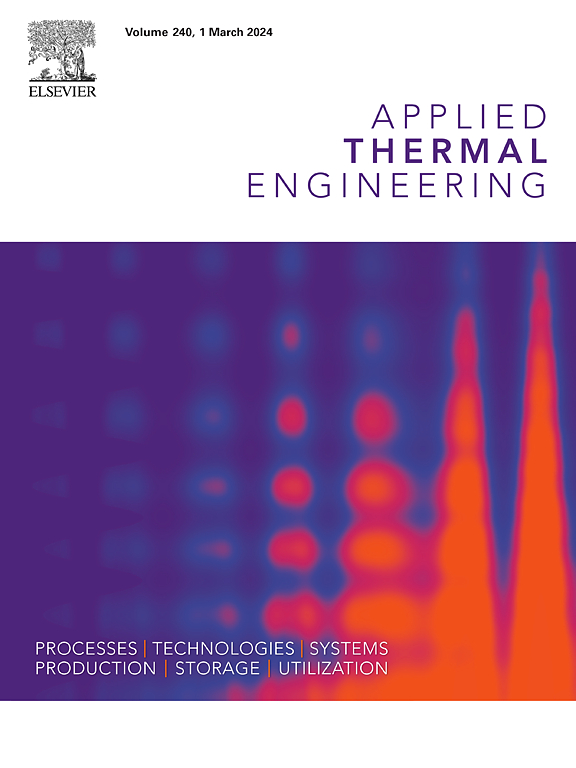Performance analysis of supercritical carbon dioxide Brayton cycle with leakage reinjection system
IF 6.1
2区 工程技术
Q2 ENERGY & FUELS
引用次数: 0
Abstract
Rotating machinery in supercritical power cycles typically employs dry gas seals or labyrinth seals, and the leakage gas needs to be reinjected to maintain long-term operation. This paper focuses on a MW-scale supercritical CO2 power generation system. State of leakage gas after passing through the dry gas seals and labyrinth seals were estimated. The impact of reinjecting the leakage gas on system performance was evaluated through simulations. The effects of different leakage reinjection locations on the performance of the supercritical CO2 Brayton cycle were analyzed, and the performance impacts of using dry gas seals versus labyrinth seals were compared. The results demonstrated that using a dry gas seal and reinjecting the leakage gas back into the hot-end inlet of the high-temperature regenerator led to the smallest reduction in system efficiency, with a decrease of 1.013 %. For the labyrinth seal, reinjecting the leakage gas from the compressor into the turbine inlet, and from the turbine into the hot-end inlet of the high-temperature regenerator minimized the reduction in system efficiency. When the outlet pressure of leakage gas after the labyrinth seal ranged from 5 to 9 MPa, system efficiency improved as the outlet pressure increased, and the heat exchanger area per unit of power output decreased, enhancing the overall compactness of the power plant. These findings provide valuable insights for the design and optimization of supercritical CO2 Brayton cycle leakage reinjection systems.
带泄漏回注系统的超临界二氧化碳布雷顿循环性能分析
超临界发电循环中的旋转机械通常采用干气密封或迷宫密封,需要重新注入泄漏气体以维持长期运行。本文以兆瓦级超临界二氧化碳发电系统为研究对象。对通过干气密封和迷宫密封后的泄漏气体状态进行了估算。通过模拟评估了重新注入泄漏气体对系统性能的影响。分析了不同泄漏再注入位置对超临界二氧化碳布雷顿循环性能的影响,并比较了使用干气密封和迷宫密封对性能的影响。结果表明,使用干气密封并将泄漏气体重新注入高温再生器的热端入口导致的系统效率降低幅度最小,仅为 1.013%。对于迷宫密封,将泄漏气体从压缩机重新注入涡轮机入口,再从涡轮机注入高温再生器的热端入口,可使系统效率的降低幅度最小。当迷宫密封后的泄漏气体出口压力在 5 至 9 兆帕之间时,系统效率随着出口压力的增加而提高,单位功率输出的热交换器面积减少,从而提高了发电厂的整体紧凑性。这些研究结果为超临界二氧化碳布雷顿循环泄漏回注系统的设计和优化提供了宝贵的启示。
本文章由计算机程序翻译,如有差异,请以英文原文为准。
求助全文
约1分钟内获得全文
求助全文
来源期刊

Applied Thermal Engineering
工程技术-工程:机械
CiteScore
11.30
自引率
15.60%
发文量
1474
审稿时长
57 days
期刊介绍:
Applied Thermal Engineering disseminates novel research related to the design, development and demonstration of components, devices, equipment, technologies and systems involving thermal processes for the production, storage, utilization and conservation of energy, with a focus on engineering application.
The journal publishes high-quality and high-impact Original Research Articles, Review Articles, Short Communications and Letters to the Editor on cutting-edge innovations in research, and recent advances or issues of interest to the thermal engineering community.
 求助内容:
求助内容: 应助结果提醒方式:
应助结果提醒方式:


